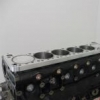Water Pump Flow Rates
Announcements
-
Similar Content
-
Latest Posts
-
Sorry just googled Toyota WiLL Vi and wish that I didn't, day ruined, fark etc.
-
So mines not in yet ... which should tell you something ... I got a set of neat gears as well, took a year to get those. Then the setup was a real tricky one, with all the changes. It seems the shims for the front diffs are in short supply and had to wait two round of custom ones. This was all done by a professional diff builder , not me/diy. So here we are about to go into 2025 and I do finally have a built front sump / diff / gears. Just need the mojo to pull out the engine ... Oh as an aside on the neat gears, they have some whine, mostly on decel. Taken a bit of setup again to get that down to a street car level.
-
Duncan what the hell is this thing, just so I am aware and can avoid situations in future where I might encounter one face-to-face?









Recommended Posts
Create an account or sign in to comment
You need to be a member in order to leave a comment
Create an account
Sign up for a new account in our community. It's easy!
Register a new accountSign in
Already have an account? Sign in here.
Sign In Now